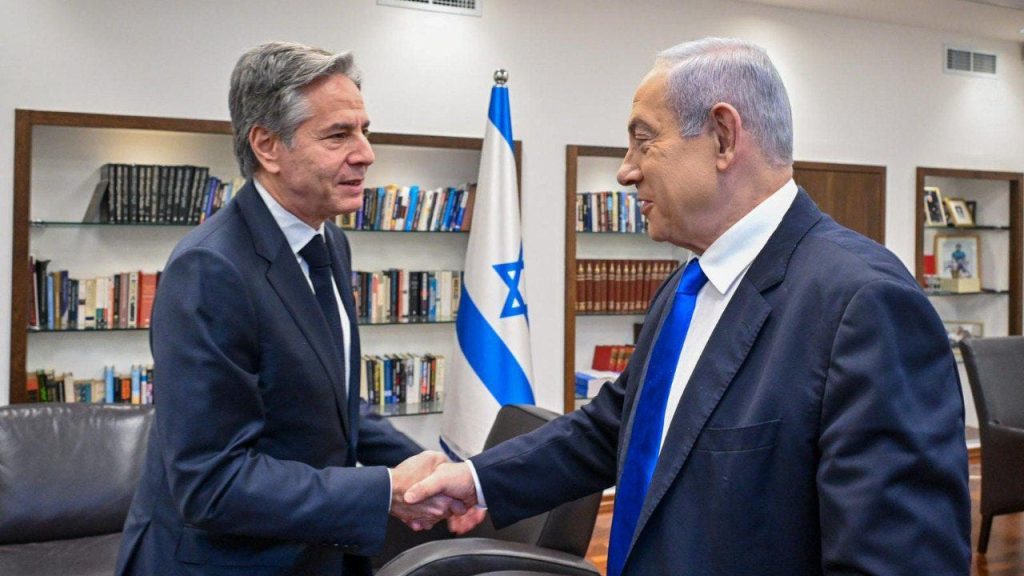U.S. Secretary of State Antony Blinken arrived in Tel Aviv, Israel, as part of his Middle East tour to facilitate a cease-fire agreement between Israel and Hamas in Gaza. This visit marks Blinken’s 10th trip to the region since October, when the conflict began. He is scheduled to meet with senior Israeli leaders, including Prime Minister Benjamin Netanyahu, before continuing his tour in Egypt. Talks are at an “inflection point,” according to a senior Biden administration official, who stressed the importance of reaching a deal for a cease-fire and the release of hostages in Gaza, which is seen as critical at this time.
Efforts to mediate the discussions between Israel and Hamas have been ongoing for months with Qatar, the U.S., and Egypt playing key roles. Despite these efforts, an agreement has not yet been reached. Netanyahu’s office released a statement expressing concerns about serial leakers undermining the progress of negotiations. The prime minister has insisted on key demands, including Israeli forces remaining on the border strip between Gaza and Egypt to prevent weapons smuggling. He continues to work towards a deal that will maximize the number of living hostages and meet the objectives of the conflict, as stated in the office’s communication.
The Biden administration is focusing on intensifying diplomatic pressure to push for a cease-fire deal in the Middle East. Blinken’s trip is aimed at emphasizing the importance of reaching an agreement and alleviating the suffering in Gaza. The secretary is expected to engage with all parties involved to stress the urgency of finalizing a deal. The visit to Israel is just the beginning of Blinken’s tour, with plans to continue the discussions in Egypt. The administration is hopeful that this round of talks will lead to a breakthrough in ending the conflict.
A son of the founder of Hamas has expressed skepticism about the possibility of a cease-fire between Israel and Hamas until certain conditions are met. He believes that a deal cannot be reached until the Ayatollah is no longer in power. Qatar, the U.S., and Egypt have been involved in mediating the discussions between the parties, but challenges persist. Despite the efforts from various mediators, achieving a lasting cease-fire agreement has proven to be elusive. The involvement of key players in the region, including Israel and Hamas, is essential in finding a resolution to the conflict.
The cease-fire negotiations have faced obstacles, with concerns raised about the leaking of information that may hinder progress. Netanyahu’s office has reiterated its stance on fundamental demands, such as preventing weapons smuggling into Gaza. The prime minister continues to emphasize the importance of these demands in achieving the objectives of the conflict. As discussions continue, the focus remains on reaching a deal that will address the needs of both parties and ensure the well-being of those affected by the conflict. The efforts to advance a cease-fire deal are ongoing, with the hope that an agreement can be reached in the near future.
In conclusion, Secretary of State Antony Blinken’s visit to Israel is part of a broader effort to push for a cease-fire agreement between Israel and Hamas in Gaza. The Biden administration is actively engaging in diplomatic efforts to facilitate negotiations and find a resolution to the conflict. Despite challenges and differing views on key issues, there is optimism that progress can be made towards a lasting cease-fire agreement. With continued discussions and the involvement of key stakeholders, there is hope for a positive outcome that will benefit all parties involved in the conflict.


